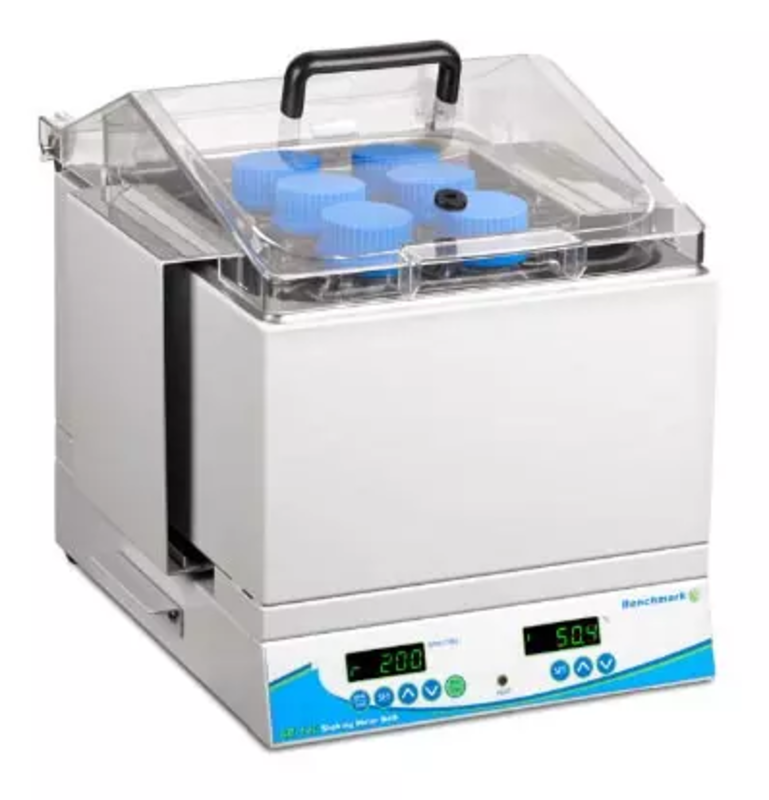A Primer on Laboratory Water and Circulating Baths
October 26 2016 /
Laboratory baths are available with two key methods of heating and cooling. There are general purpose water baths, which work with heated water, and circulating baths for experiments and research that require temperatures above the boiling point and below the freezing point, serving both heating and cooling needs. Read here for a guide to the several types of water and circulating baths:
A Guide to General Purpose Water Baths
A laboratory water bath is an essential piece of lab equipment that is basically a container filled with heated water. It has many uses, including using water at a constant temperature to incubate samples for an extensive amount of time and research tasks such as reagent warming, melting substrates, cell culture incubation, and creating chemical reactions at high temperatures.
The constant circulation of water in a laboratory water bath keeps the temperature uniform, providing a consistent environment for testing and experimentation. The type of water can vary, depending on the usage and experiment, and all water baths go from just above freezing temperatures to up to 99.9 degrees centigrade.
A general purpose waterbath can have either digital or analog controls for setting the temperature of the water. The use of circulated water as a source of temperature is preferable to other sources of heating. For instance, an open flame could ignite flammable chemicals. Water baths require some special care in use and maintenance, as outlined in the tips below.
Tips for Using Water Baths
Here are some general tips on using water baths:
- To avoid dangerous chemical reactions, don’t use a water bath with applications that have moisture-sensitive or explosive properties. And never heat a water bath fluid above the flashpoint. It’s critical to avoid risking personal injury and damage to the workspace.
- It is important to regularly monitor the water level of a water bath. Be sure to use only distilled water so that salts don’t build up on the heating element. Over time this can corrode and harm the water bath.
- The regular use of disinfectants will help to inhibit the growth of organisms in the water bath. Regular decontamination keeps research experiment results from being thrown off by unwanted organisms.
- Bring the temperature of the water bath to at least 90 degrees centigrade for 30 minutes at least once a week to also assist in decontaminating the water bath.
- Use water-resistant labels and markers in water baths, as regular labels and markers tend to come off in water baths.
- For working with chemicals that have fumes, it is recommended to run the water bath within a fume hood or a well-ventilated workspace.
- Keep the cover of the water bath tightly shut to help prevent evaporation and to assist in reaching the highest temperatures possible.
- Make sure the bath is set up on a steady surface, and is located a good distance away from any flammable materials. This is especially important when a shaking bath is in use.
Types of Circulating Baths
If the temperature is required to go above 100 degrees centigrade (the boiling point of water) or below 0 degrees centigrade (the freezing point of water), then there are other fluids and materials that can be used, such as oil, sand, silicone, and more. These heating and cooling substances require the use of refrigerated and heated circulating baths. Refrigerated and heated circulating baths provide a wider temperature range and use different elements to heat and cool. As such, they can provide a constant and uniform heating and cooling environment for temperatures ranging from -40 to 200 degrees centigrade.
Next Day Science Laboratory Water and Circulating Baths
Depending on the application, there are several types of water and circulating baths available. Circulating baths, which can sometimes be called stirrers, are useful when a reliably constant temperature is necessary. Shaking baths move the liquids around while providing consistent temperature, with the option to turn off the shaking feature. For instance, in microbiological research, continuous shaking will allow cell cultures that are grown in the liquid to mix with air. Note: Non-circulating baths utilize convection, instead of circulation of an element like water, and as such, the baths are less reliable for a constant temperature. These types of baths often have accessories, such as stirrers, to make for a more uniform temperature distribution.
At Next Day Science, the water and circulating bath options include general purpose water baths, refrigerated circulating baths, and heated circulating baths. Here is a little information on each type.
General Purpose Water Baths
General purpose water baths come in a variety of options ranging from mini water baths to stainless steel openbaths to high-end baths that can hold almost 200 liters. Considered to be must-have lab equipment, they are most often used for incubation, warming, melting, and the creation of chemical reactions that require high heat. While analog temperature controls are available, most styles utilize digital temperature setting.
Refrigerated Circulating Baths
Refrigerated circulating baths are called into usage when there is a need to have a consistently cold environment for research and experimental purposes. Next Day Science offers refrigerated circulating baths from small, space-saving styles to medium capacity models for mid-size operations to large laboratory sizes, ranging in capacity from 7 to 28 liters and in temperatures from -40 to 200 degrees centigrade. There are only digital temperature controls and these can range from standard to programmable.
Heated Circulating Baths
Heated circulating baths also provide constant temperature by circulating heat throughout the bath, but they don’t supply the sub-zero temperatures and work within the range of 10 to 200 degrees centigrade. At Next Day Science, there are a variety of sizes in heated circulating baths, from a benchtop 7 liter model to a mid-range 15-liter or 20-liter style to a full size 28 liter heated model. All models have digital temperature controls, that range from standard to programmable.
